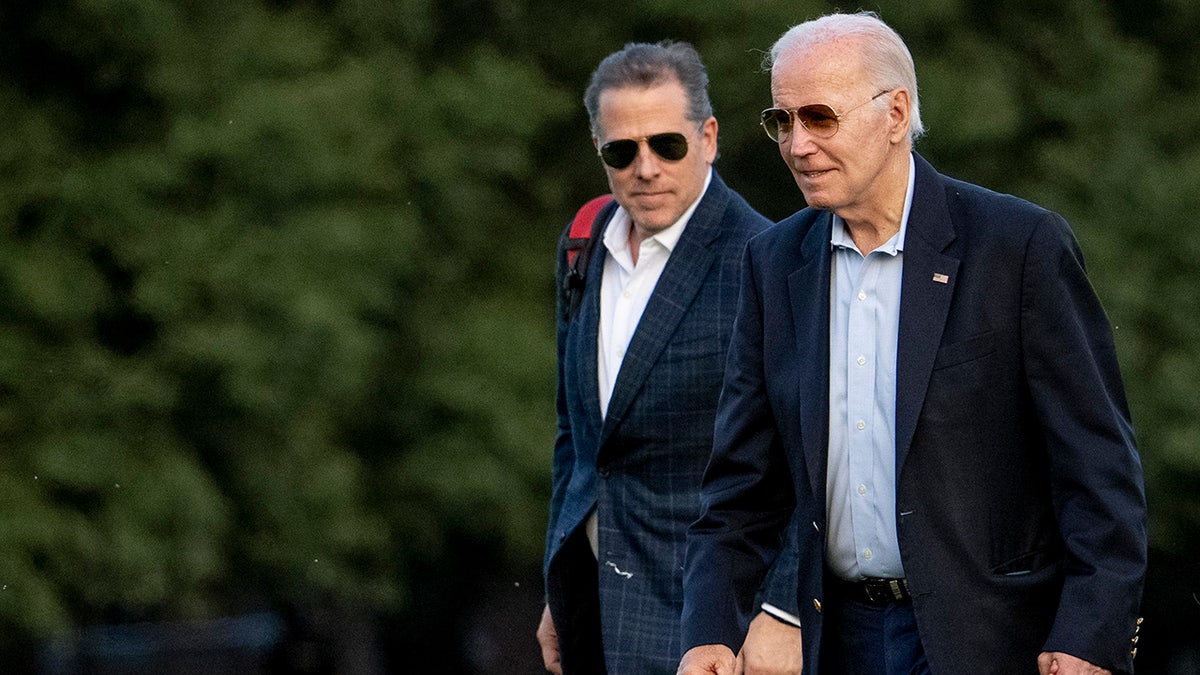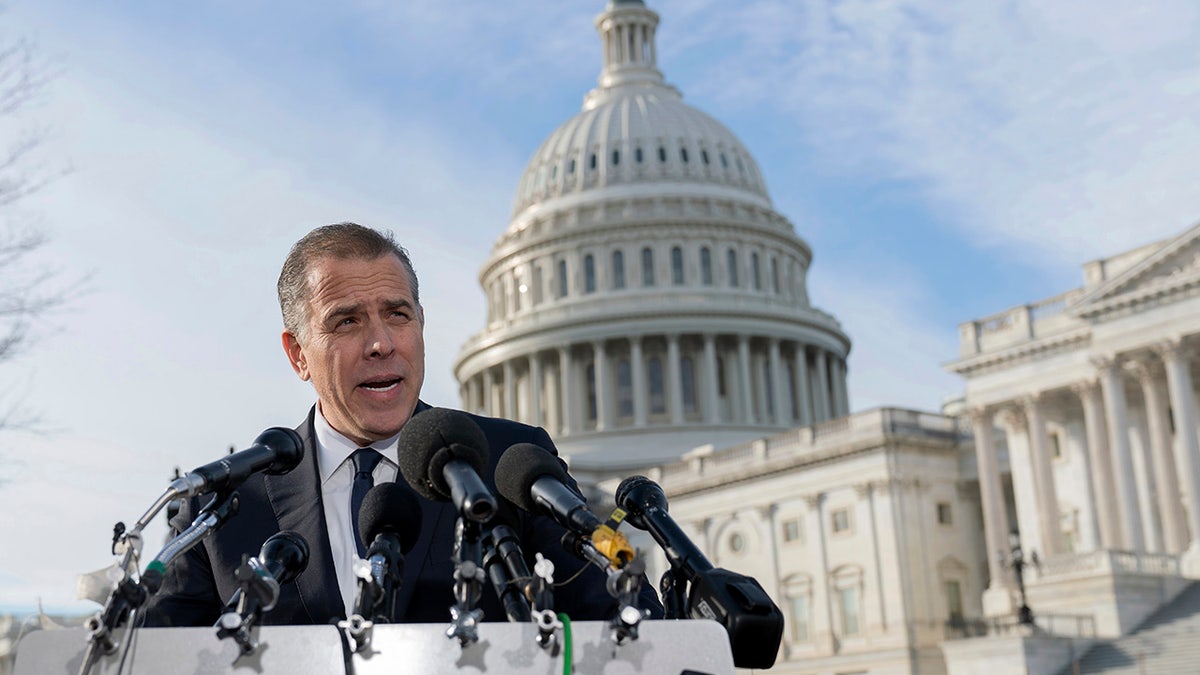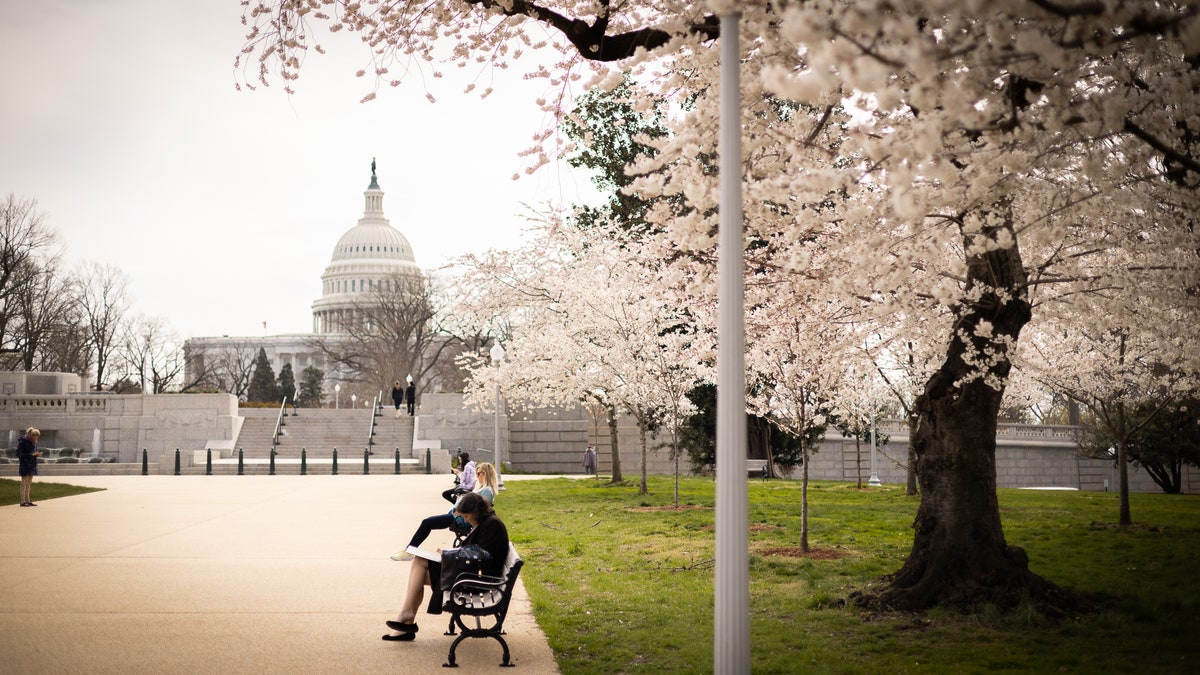Staging of Hunter Biden statement inoculated him from House authority: Chad Pergram
FOX News senior congressional correspondent Chad Pergram breaks down the latest developments in the Hunter Biden investigation after the president’s son skipped his deposition before Congress.
Detractors refer to Washington, D.C., as "the swamp."
But this is about another swamp – specifically, the Senate "swamp."
The Senate swamp is a geographic location on Capitol Hill. It’s just across from the Senate steps and where some Senate officials park their cars. Those who work and operate on Capitol Hill have referred to this spot as the Senate swamp for decades.
They started calling the locale the Senate swamp in 1964.

President Biden ignored reporters' questions on Wednesday shortly after his son, Hunter, defied a congressional subpoena regarding the family's business dealings. (Andrew Harnik)
Legendary congressional correspondent Roger Mudd covered the filibuster of the Civil Rights Act for CBS. Mudd often did his TV standups from the Senate steps with a large clock behind him to show how much time had elapsed (eventually two months) during the filibuster.
Southern senators complained about Mudd standing on the Senate steps. The U.S. Capitol Police moved Mudd and his compadres in the press corps across the plaza to a grassy area. Well, one day it rained. And the correspondent was named "Mudd." So, they started referring to the area as the "Senate swamp."
However, that site is anything but a swamp.
The area is paved. A panel of permanent, stainless steel TV jacks for networks to do live shots lines a narrow concrete façade. Reporters can face one direction and talk about Congress with the Capitol behind them. If reporters turn around, they can talk about legal opinions with the Supreme Court serving as a backdrop.
Or, someone like Hunter Biden can use the spot for a press conference, as he did Wednesday morning, publicly defying a House subpoena for a closed-door deposition.
The entrance to the Rayburn House Office Building is more than an eighth of a mile from the Senate swamp. A phalanx of reporters and photographers swarmed the halls of Rayburn, awaiting Hunter Biden’s anticipated arrival for a closed-door deposition. Another horde of journalists roamed the Rayburn "horseshoe," a semi-circular driveway which curves up to a side entrance across from the Longworth House Office Building.

Hunter Biden, son of President Joe Biden, talks to reporters at the U.S. Capitol, in Washington, Wednesday, December 13, 2023. (Jose Luis Magana)
No one was 100% sure whether Hunter Biden would show up.
House Oversight Committee Chairman James Comer, R-Ky., issued a subpoena for Hunter Biden to "testify at a deposition touching matters of inquiry," at 9:30 a.m. ET on Wednesday in the Rayburn Building. The subpoena added that "you are not to depart without leave of said committee or subcommittee."
HOUSE VOTES TO AUTHORIZE IMPEACHMENT INQUIRY
In late November, Abbe Lowell — who is Hunter Biden’s attorney — countered Comer’s demand for a deposition with a demand of his own.
"We have seen you use closed-door sessions to manipulate, even distort the facts and misinform the public," wrote Lowell to Comer. "We therefore propose opening the door."
The ultimatum appeared to catch Comer and Republicans on the Oversight Committee off guard. Comer said he would grant Hunter Biden the chance to testify at an open hearing, but a closed-door deposition must come first. Comer cited how Democrats conducted multiple, private depositions in their impeachment investigation of former President Trump in the fall of 2019, ahead of public hearings a couple of months later.
So, Hunter Biden indeed showed up on Capitol Hill around 9:30 am Wednesday — but not anywhere near the Rayburn House Office Building.
Hunter Biden materialized an eighth of a mile away at the Senate swamp — that same locale where the Capitol Police banished Roger Mudd to report on the Civil Rights Act filibuster.

Hunter Biden, the son of President Joe Biden, is seen after making a statement during a news conference outside the U.S. Capitol about testifying publicly to the House Oversight and Accountability Committee on Wednesday, December 13, 2023. (Tom Williams)
Hunter Biden’s Senate swamp maneuver was a filibuster unto itself when it came to ignoring James Comer’s subpoena. But his appearance was both political stagecraft and legal scheme bundled into one.
Hunter Biden showed up on Capitol Hill at the assigned time. But he wasn’t going anywhere close to the room where Comer planned a multi-hour deposition. Materializing at the Senate swamp site with the Capitol dome glimmering behind him was an effort by Hunter Biden to demonstrate he was willing to appear — just on his terms.
ANDY BIGGS CALLS FOR CONTEMPT CHARGES AGAINST ERIC SWALWELL FOR AIDING HUNTER BIDEN
After a brief statement, Hunter Biden left the Senate swamp site, climbed into a van and departed.
Reporters and scribes were panting. Out of breath. Bent over. Hands holding their legs just above their knees like a gassed NBA shooting guard in the fourth quarter. They received word that Hunter Biden was coming to Capitol Hill. But most were over in the Rayburn House Office Building — nowhere near the spot where the news of the day unfolded.
So how and why did the Senate swamp become the hot venue for the story of the day?
It starts with Rep. Eric Swalwell, D-Calif.
Lawmakers are permitted to use the Senate swamp site and a similar location called the "House triangle" for press conferences and other events. The same with studios in the House and Senate Radio/TV Galleries inside the Capitol complex. However, the indoor locations generally require rank-and-file members to secure an invitation from a credentialed member of the congressional press corps.

Rep. Andy Biggs is calling for Democrat Rep. Eric Swalwell (pictured) to be punished by Congress for helping Hunter Biden on Wednesday morning. (Al Drago)
It’s rare, but not unprecedented, for a House member to book an event on the Senate side. The same with a senator on the House side.
So Swalwell reserved the Senate swamp for a vague press event on Wednesday morning at 9:30. Only Swalwell had no intention of speaking to the press. This was Hunter Biden’s forum.
Those are the logistics.
But that doesn’t tell the full story.
There’s a reason why Hunter Biden showed up on the Senate side of Capitol Hill and not the House side.
Let’s say Hunter Biden ventured into the sea of reporters awaiting his prospective arrival at the Rayburn House Office Building, had his say and left. Or imagine if he had even done the same at the House triangle. The president’s son was already out of compliance with Comer’s subpoena by not attending the deposition. But showing up anywhere on the House side of the Capitol could have triggered a host of legal, constitutional and parliamentary issues for him.
JOE BIDEN FRUSTRATED AND ANXIOUS ABOUT HUNTER, SNAPS AT AIDES WHEN ASKED ABOUT INVESTIGATION: REPORT
You see, the House Sergeant at Arms has jurisdiction over the House side of the Capitol. Yes. The House and Senate meet in the same building. But constitutionally, they are distinct institutions. It’s conceivable that Comer could have argued to the Sergeant at Arms or the Capitol Police that his witness flaunted a subpoena if he showed up on House grounds — yet failed to testify.

President Joe Biden's son Hunter Biden has reportedly told people that he may have to "flee" the country if Trump wins in 2024. (Kevin Dietsch)
It’s unlikely that congressional security officials truly would have done anything about it had Comer — or more specifically, House Speaker Mike Johnson, R-La., demanded action for a witness defying a subpoena. The House does hold certain "inherent" enforcement powers when it comes to contempt of Congress. Congress used to arrest and hold people for contempt of Congress in the late 18th and early 19th centuries. The last such action where Congress exercised its "inherent" contempt powers was with a Department of Commerce official in the 1930s.
But Abbe Lowell is no fool.
He knew that his client could earn the media attention he wanted by coming to Capitol Hill at the precise time dictated by the subpoena — yet not setting foot anywhere near the House of Representatives. Hence, the Senate swamp.
And being on the Senate side provided something of a legal shield to inoculate Hunter Biden, which he would not have enjoyed on House turf.

Washington, D.C., has been referred to as "the Swamp." (Joshua Comins)
Yes, Hunter Biden defied a subpoena and failed to appear for a deposition. It’s possible the House will vote to hold President Biden’s son in contempt of Congress. Such a referral could go to the Department of Justice for potential prosecution.
But in resisting the subpoena, Hunter Biden showed up at the Senate swamp.
CLICK HERE TO GET THE FOX NEWS APP
It may be a swamp. But in this case, the terra firma of the Senate offered firmer legal footing to Hunter Biden than the marble floors of the Rayburn House Office Building.






